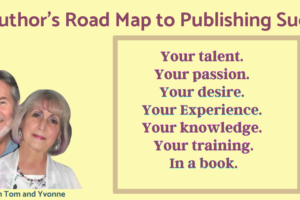Which BIG DOG will you choose for your book?
[A version of this post first appeared in our weekly newsletter, which of course you should sign up for.]I called this entry “manufactured marginalia” because a client had asked whether they should add their book to the IngramSpark platform in addition to Amazon’s KDP (Kindle Direct Publishing).
In researching the issue, I pulled Guy Kawasaki’s book, APE: Author, Publisher, Entrepreneur, and ended up adding a note in margin for reasons you’ll see in a moment.
KDP, warts and all . . .
Back in 2018, I looked carefully at both KDP and the new kid at that time, IngramSpark, when choosing how to publish my book, Read ‘Em & Reap.
You know, of course, about Amazon’s sheer size advantage over just about any other player in the book industry. But in case you’re less familar with Ingram, it’s the pre-existing giant in the book distribution channel, a global powerhouse since before Amazon was an idea in Jeff Bezos’ dreams.
That’s why I wanted to give both of them a hard look. I concluded that KDP was the better option. We’ll get into some other reasons, but the big one at that time was the fee structure for getting a book published. IngramSpark charges $49.00 to set up a print and ebook combination. More importantly, to me, they charge $25.00 each time you upload a new file to make changes or correct errors.
KDP charges nothing for getting your books online and keeping them up to date.
Revisiting the question, I recalled that Kawasaki had done a comparison of platforms in his book. He was writing in 2012, before IngramSpark existed. Then, he was comparing KDP with Apple, Barnes & Noble, Kobo, and the like. But here’s his analysis:
“[KDP] is the gorilla in the market and can account for most of your sales. Amazon owns this market. …
“… Kindle Direct Publishing is the path of least complexity, most sales, and greatest visibility for most self-published authors.”
When I re-read that section, I added my note, “Yup, still is!”
Sure, it can be hard to figure out some details and even harder to get support from KDP. But honestly, I’ve had pretty good luck with their live chat support lately. And even their email system will eventually get back to you.
But what about Ingram’s distribution clout?
Our client’s question was phrased a little differently, asking whether it was worth it to be on both platforms? Sounds sensible, right?
Well, after digging into the help topics on both sites, I discovered – like the dogs’ play tunnels in the photo above – both paths lead to the same outlets, literally.
Here’s what IngramSpark’s article says:
“If you are already using the expanded distribution services KDP offers then your book is already available for sale through some of the markets we offer. KDP has an account with Ingram which is how they can offer expanded distribution services.”
And here’s what KDP says about it’s expanded distribution:
“Expanded Distribution can help you reach more readers through bookstores, online retailers, libraries, and academic institutions.
“Booksellers and libraries purchase paperbacks from large distributors [e.g., Ingram]. If you enroll your paperback in Expanded Distribution, we’ll make your book available to distributors so booksellers and libraries can find your book and order it.”
The implication is that KDP may also be working with other “large distributors” like Baker & Taylor.
Since Amazon itself accounts for the lion’s share of total book sales, we may be poking at small numbers anyway. But once you learn that KDP has an account with Ingram, why bother setting up your book on both?
And it is a bother.
Here’s what IngramSpark warns about getting on both:
“If you want your book available through IngramSpark and Amazon, you would have to remove expanded distribution services and have the title, ISBN, and files transferred to your IngramSpark account. You will need to have a fully set up IngramSpark account before requesting the transfer. Then your book could be available through Ingram and Amazon. If you decide to do this, there is a transfer process and an addendum that has to be completed by you, the publisher, and KDP would have to approve the transfer.”
Um, really? How is this having your book on both, if you have to transfer even the book files over to IngramSpark? What do you gain?
And one last caveat: availability is not the same as orders.
On this point, KDP is upfront and honest:
“Enrolling your paperback in Expanded Distribution doesn’t guarantee it will be accepted by distributors or ordered by a particular bookseller or library. The decision to list your book lies with distributors and the decision to order your book lies solely with the individual booksellers and libraries.”
Enrolling our books in KDP’s Expanded Distribution program has made them available on a number of competing online retailers, however, like Bookshop, Indiebound, and Books-A-Million.
Back to marketing
In my view, getting your books into physical stores, libraries, and such, is a marketing problem, not a platform problem. KDP provides a number of marketing tools and programs, like free book days. And when you get some traction, Amazon’s own algorithm kicks in and starts promoting you in the search results.
As Kawasaki put it, KDP “is the path of least complexity, most sales, and greatest visibility for most self-published authors.”
And marketing may be another place where that fee for making changes to your book becomes a major negative for IngramSpark.
For example, our client, Tony Pisanelli, has won three awards for his book, The Phoenix Career Principles: Rising from Employee Ashes to the Flame of Entrepreneurial Success. Each time, he wanted to upload new cover images with the award displayed. Oh, and another correcting a typo – on the cover – that somehow nobody caught.
That’s a new cover file for the paperback (a PDF) and one for the ebook (a JPG).
Times four.
As I understand their fees, on IngramSpark that would have cost two hundred bucks.
On KDP, not a dime.
Choose your big dog wisely.






1 Comment
Leave your reply.